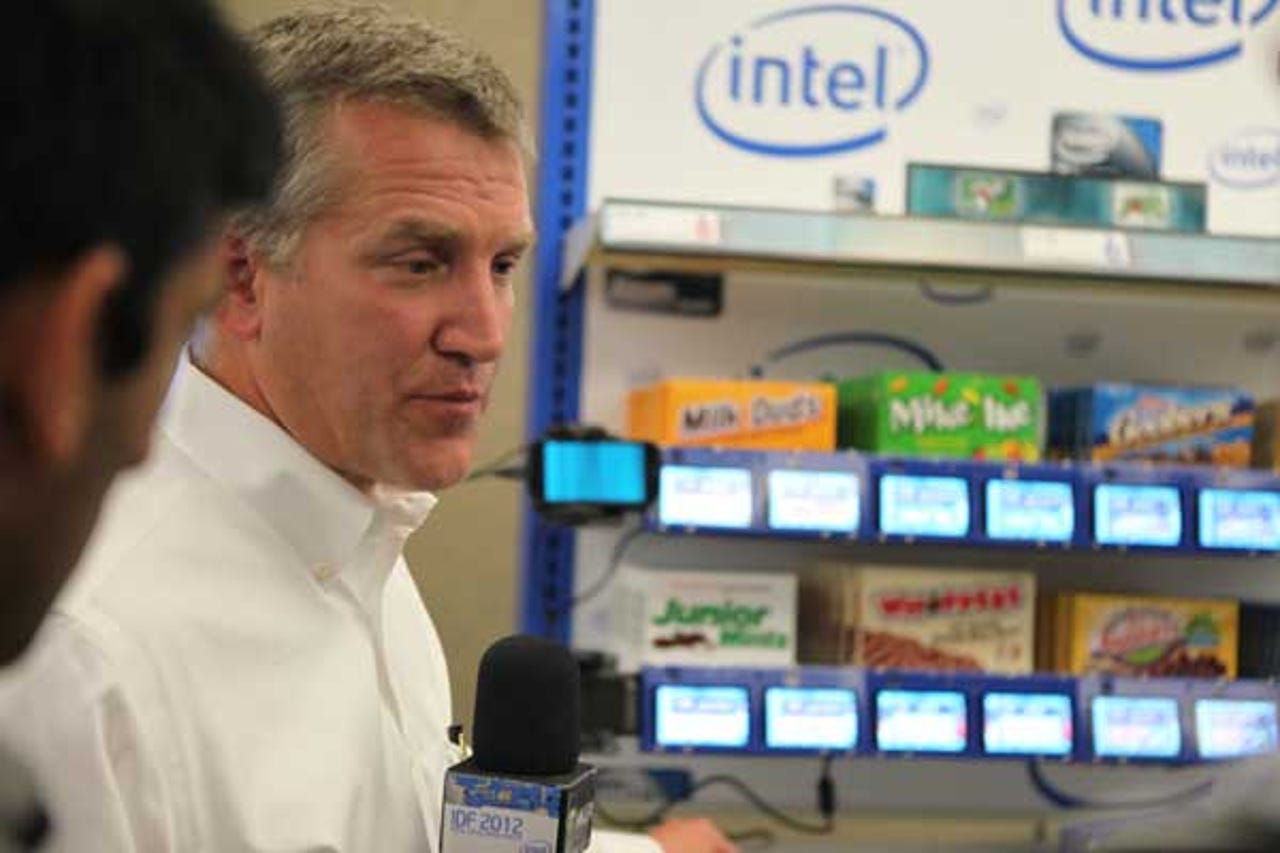Inside IDF: Intel shows you the future

The Intel Developer Forum 2012 in San Francisco highlighted the chipmaker's plans for the near future. Chief Product Officer Dadi Perlmutter delivered the main keynote where he unveiled Intel's new low-powered chip for mobile devices, primarily tablets and ultrabooks.
ZDNet's Rachel King and ZDNet UK's Jack Clark were at IDF and here's what they reported:
Intel and rivals prepare for IDF chip battle
Intel pins hopes on Haswell to boost PC sales
Intel Labs documentary looks back at Steampunk era to build future
Intel wants to redefine mobile personal computing via voice, gesture functionality
Haswell: Intel's key for unlocking the post-PC world
Intel SVP: Yes, HTML5 is over-hyped but it will move mobile forward
Intel: We know how to make 10nm chips
Intel ports Android Jelly Bean to x86 phones, but no rollout date set
Intel: Non-volatile memory shift means chips need an overhaul
Perlmutter must have been thristy as he demonstrated how the Coke Intelligent Vending Machine which can take your picture and send it to Facebook or wherever. It's powered by 2nd generation Intel Core processors and allows a platform for communication and interactive marketing. Features include games, applications and social media integration.
Intel's Chief Product Officer holds up thel Atom Processor z2460 for smartphones and the Xeon Phi co-processor for high performance.
Perlmutter showed a future Ultrabook™ reference design that converts from a clamshell PC to a tablet.
Perlmutter says the next-generation Intel Atom processor, codenamed 'Clover Trail' for light-weight tablets featues better battery life and always on technology.
Intel sees a need for an integrated hardware and software approach to security in light of the increasingly complex and sophisticated threats.
Intel's SVP and general manager of the Software and Services Group, Renée James, was joined on stage by Michael DeCesare, co-president of McAfee.
Perlmutter says 4th generation Intel Core processors will enable faster, thinner, lighter, cooler and more secure systems with built-in graphics. They are due next year.
Diane M. Bryant, vice president and general manager of Intel's Datacenter and Connected Systems Group and Mario Müller, vice president IT infrastructure, BMW, and chairman and secretary, Open Data Center Alliance (ODCA) talk about new usage models to shape the future of cloud computing.
What would a company do without individual preference-based hardware or software? Lama Nachman, research scientist at Intel Labs, explain's Intel's 'Socially Aware Activity' demo which can estimater a user's preferences with context-aware technology.
Attendees get to try out the latest ideas from Intel.
A mass of reporters crowd around Intel's new tech gear to get a feel for the chipmaker's future.
Rick Roberts, research scientist at Intel Labs, shows off Intel's 'Line of Sight Marketing' demo and how future marketers can use light-emitting diode (LED) lighting and signage as a tool to help consumers make purchasing decisions
Doug Carmean, research scientist at Intel Labs, shows off Intel Labs' 'Display without Boundaries' demo to showcase the transformation of how and where we display and interact with our content in the future.
Margie Morris, clinical psychologist and research scientist at Intel Labs, explains Intel's 'Emotion through Images' demo, which explores the emotional associations people have with images and the potential of images to foster emotionally rich exchange.

Director of Micro Digital Signage at Intel, Thomas Birch, tells about the future of shopping for Milk Duds and Junior Mints by using Intel Labs' 'Interactive Shopping' demo. It uses motion sensor, temperature sensor, camera, WiFi/3G, Ethernet, touchscreen, near-field communication and cloud connectivity to revolutionize the future shopping experience.